
Saipan: A Jewel in the Pacific
Discover Saipan, a tropical paradise in the Northern Mariana Islands, offering stunning beaches, world-class diving, rich history, and vibrant local culture.
Saipan, the largest island in the Northern Mariana Islands, is a tropical paradise that promises a unique blend of history, culture, and natural beauty. With its stunning beaches, crystal-clear waters, and lush landscapes, Saipan is a haven for beach lovers and adventure seekers alike. The island's rich history, marked by World War II relics and ancient Chamorro culture, adds depth to its natural allure. Saipan's natural attractions are nothing short of spectacular. The island is home to the world-famous Grotto, an underwater cavern that is a favorite among divers. The stunning Managaha Island, just a short boat ride away, offers pristine beaches and excellent snorkeling opportunities. For those who prefer staying on land, the island's many hiking trails provide breathtaking views of the Pacific Ocean and the lush island interior. The island's cultural tapestry is equally captivating. Visitors can explore ancient Latte Stone sites, which are remnants of the indigenous Chamorro culture. The American Memorial Park offers a poignant reminder of the island's strategic significance during World War II. Saipan's vibrant local markets, where you can sample Chamorro cuisine and shop for traditional crafts, provide a window into the island's contemporary culture. Saipan's warm hospitality and diverse attractions make it an ideal destination for travelers seeking both relaxation and adventure. Whether you're diving into the depths of the Grotto, hiking to the top of Mount Tapochau, or simply soaking up the sun on Micro Beach, Saipan offers an unforgettable experience that caters to all types of travelers.
Local tips in Saipan
- Visit the Grotto early in the morning to avoid crowds and enjoy the best diving conditions.
- Wear reef-safe sunscreen to protect the delicate marine life around the island.
- Rent a car to explore the island at your own pace and reach less accessible spots.
- Try local Chamorro dishes like red rice and chicken kelaguen at local markets.
- Carry cash, as some smaller vendors and markets may not accept credit cards.
- Visit the American Memorial Park for a deeper understanding of Saipan's World War II history.
Neighbourhoods in Saipan
Saipan: A Jewel in the Pacific
Saipan, the largest island in the Northern Mariana Islands, is a tropical paradise that promises a unique blend of history, culture, and natural beauty. With its stunning beaches, crystal-clear waters, and lush landscapes, Saipan is a haven for beach lovers and adventure seekers alike. The island's rich history, marked by World War II relics and ancient Chamorro culture, adds depth to its natural allure. Saipan's natural attractions are nothing short of spectacular. The island is home to the world-famous Grotto, an underwater cavern that is a favorite among divers. The stunning Managaha Island, just a short boat ride away, offers pristine beaches and excellent snorkeling opportunities. For those who prefer staying on land, the island's many hiking trails provide breathtaking views of the Pacific Ocean and the lush island interior. The island's cultural tapestry is equally captivating. Visitors can explore ancient Latte Stone sites, which are remnants of the indigenous Chamorro culture. The American Memorial Park offers a poignant reminder of the island's strategic significance during World War II. Saipan's vibrant local markets, where you can sample Chamorro cuisine and shop for traditional crafts, provide a window into the island's contemporary culture. Saipan's warm hospitality and diverse attractions make it an ideal destination for travelers seeking both relaxation and adventure. Whether you're diving into the depths of the Grotto, hiking to the top of Mount Tapochau, or simply soaking up the sun on Micro Beach, Saipan offers an unforgettable experience that caters to all types of travelers.
When is the best time to go to Saipan?
Iconic landmarks you can’t miss
Saipan World Resort
Discover paradise at Saipan World Resort, where luxury meets nature in the heart of the Northern Mariana Islands.

Banzai Cliff Monument
Explore the breathtaking views and historical depth of Banzai Cliff Monument, a must-visit site in Saipan, Northern Mariana Islands.

The Grotto
Explore The Grotto, a breathtaking natural wonder in Saipan, perfect for snorkeling, diving, and soaking in the beauty of Northern Mariana Islands.

American Memorial Park
Experience the serene beauty and historical significance of American Memorial Park on Saipan, where nature and remembrance unite.
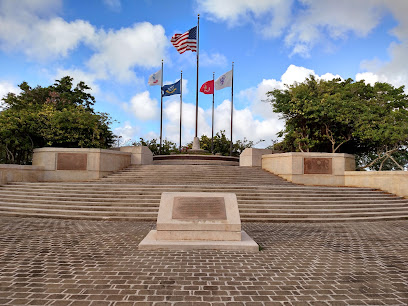
I Love Saipan
Discover unique souvenirs and stylish clothing at I Love Saipan, a vibrant store in Garapan, Northern Mariana Islands, perfect for every traveler.

The Shack, Saipan
Discover the vibrant flavors of Saipan at The Shack, a delightful café offering breakfast, crepes, and refreshing drinks along Beach Road.

Suicide Cliff
Experience breathtaking views and rich history at Suicide Cliff, a must-visit landmark in Saipan's stunning landscape.
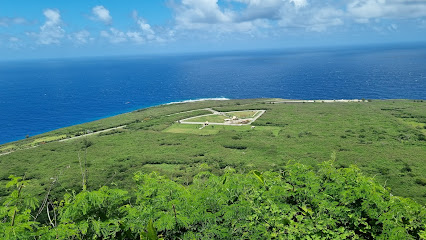
Loco Taco
Experience the vibrant flavors of Mexico at Loco Taco, Garapan's top self-service restaurant for delicious tacos and burritos.

Godfather's Bar
Discover the lively ambiance of Godfather's Bar in Saipan, where vibrant nightlife meets friendly atmosphere and local flavors.

Cafe MangoSix
Discover the taste of Saipan at Cafe MangoSix, where tropical vibes meet delicious coffee and refreshing beverages in a vibrant atmosphere.

Great Harvest Bread Co.
Discover the flavors of Saipan at Great Harvest Bread Co., where freshly baked goods and local ingredients create a unique dining experience.

The Angry Penne
Experience authentic Italian cuisine at The Angry Penne in Saipan, where every dish is a celebration of flavor and tradition.
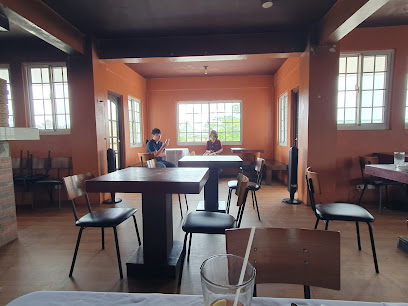
Naked Fish Bar & Grill
Experience the vibrant flavors and lively atmosphere at Naked Fish Bar & Grill in Saipan, where fresh seafood meets local music by the beach.

Axe Murderer Tours
Discover the underwater wonders of Saipan with Axe Murderer Tours, your premier destination for diving adventures in the Northern Mariana Islands.

Last Japanese Command Post
Discover the Last Japanese Command Post in Saipan, a pivotal historical landmark showcasing World War II's impact on the Pacific Islands.

Unmissable attractions to see
Saipan World Resort
Discover the tropical luxury of Saipan World Resort, where stunning ocean views, exciting activities, and relaxation await you.

Bird Island Observatory
Discover the breathtaking views and rich biodiversity at Bird Island Observatory, Saipan's premier spot for nature lovers and bird watchers.

Suicide Cliff
Experience breathtaking views and poignant history at Suicide Cliff, a must-visit landmark in Saipan, Northern Mariana Islands.

Forbidden Island Lookout
Discover stunning vistas and serene beauty at the Forbidden Island Lookout in Saipan, a must-visit observation deck in the Northern Mariana Islands.
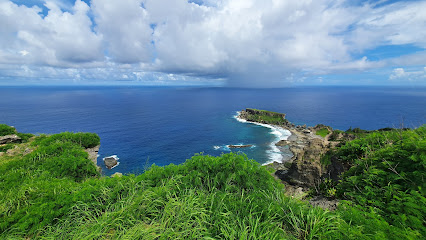
Dragon Tail Beach
Experience the serene beauty of Dragon Tail Beach, a hidden gem in Saipan, renowned for its stunning views and tranquil atmosphere for all travelers.

Saipan Katori Shrine
Experience the serene beauty and cultural significance of Saipan Katori Shrine, a tranquil retreat in the heart of the Northern Mariana Islands.

Essential places to dine
Surf Club Saipan Restaurant
Experience breathtaking views and delightful local cuisine at Surf Club Saipan Restaurant in Northern Mariana Islands.

The Shack, Saipan
Experience the flavors of Saipan at The Shack—your go-to spot for breakfast, lunch, and delightful crepes by the beach.

Yewon Restaurant
Experience authentic flavors at Yewon Restaurant in Sanjose – where local meets global cuisine in an inviting atmosphere.

J's Restaurant
Discover authentic Northern Mariana Islands cuisine at J's Restaurant in Capitol Hill – where taste meets affordability.

Loco Taco
Experience the vibrant flavors of Mexico at Loco Taco in Saipan—your go-to spot for delicious tacos and authentic cuisine.

Himawari Restaurant
Experience authentic Japanese cuisine at Himawari Restaurant in Saipan, where fresh ingredients meet traditional flavors in a welcoming atmosphere.

Wild Bill's Bar & Grill
Discover an array of flavors at Wild Bill's Bar & Grill in Saipan—where American meets Asian and Mexican cuisines amidst a tropical paradise.

Oleai Beach Bar & Grill
Experience beachside dining at Oleai Beach Bar & Grill in Saipan – where fresh flavors meet stunning ocean views.

360° Restaurant
Experience exquisite dining at Saipan's iconic 360° Restaurant, offering panoramic views and delicious cuisine in Northern Mariana Islands.

The Angry Penne
Discover authentic Italian cuisine at The Angry Penne in Saipan's Coffee Tree Mall – a delightful culinary escape.

Naked Fish Bar & Grill
Discover Naked Fish Bar & Grill in Garapan – where delicious seafood meets live music in a vibrant atmosphere.

The Magellan
Experience exquisite dining at The Magellan in Saipan - where local flavors meet international cuisine in a stunning beachside setting.

West Coast Restaurant
Experience family-friendly dining at West Coast Restaurant in Saipan, where delicious local flavors meet warm hospitality.

Plumeria Steakhouse
Experience exquisite dining at Plumeria Steakhouse in Garapan, Saipan – where local flavors meet culinary excellence.

Country House Restaurant
Experience authentic local cuisine at Country House Restaurant in Saipan – where every meal is a taste of paradise.

Markets, malls and hidden boutiques
I Love Saipan
Explore a treasure trove of authentic souvenirs and stylish clothing at I Love Saipan in Garapan, Northern Mariana Islands.

I Love Saipan Outlet Store, Middle Road
Shop for unique finds at the I Love Saipan Outlet Store, where local charm meets unbeatable prices in Saipan, Northern Mariana Islands.

New Sara Market
Discover local flavors and vibrant culture at New Sara Market, a must-visit grocery store in Saipan's Capitol Hill.

Brother's Market
Discover the flavors of Saipan at Brother's Market, your go-to grocery store for fresh produce and local specialties in Kagman II.

Capitol Hill Market
Explore the vibrant Capitol Hill Market in Saipan for local groceries, unique souvenirs, and a taste of island culture.

Zori Zori
Discover the charm of Saipan at Zori Zori, a gift shop brimming with local treasures and unique souvenirs.

Rising Supermarket
Explore local flavors and essentials at Rising Supermarket, Saipan's premier grocery store for tourists seeking a taste of the Northern Mariana Islands.

New Downtown Market
Explore the New Downtown Market in Saipan for a vibrant shopping experience filled with local flavors, unique crafts, and fresh produce.

L N Market
Explore Saipan's vibrant grocery scene at L N Market, offering fresh produce, local delicacies, and everyday essentials for an unforgettable island experience.

Mamastore 마마스토아
Explore Mamastore in Saipan for unique gifts and local treasures that capture the essence of the Northern Mariana Islands.
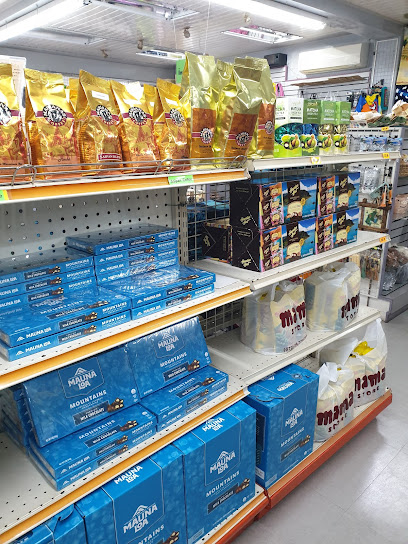
LJ's Store
Explore LJ's Store in Saipan: Your one-stop supermarket for fresh local produce and international goods in the Northern Mariana Islands.

Martha's Store
Discover the flavors of Saipan at Martha's Store, your go-to grocery destination for local and international delights in Garapan.

Hybrid Shop
Explore the diverse offerings of the Hybrid Shop in Saipan, your go-to destination for unique gifts, fashion, and camera gear.

Made In Saipan
Explore the rich culture of the Northern Mariana Islands at Made In Saipan, your go-to destination for authentic souvenirs and local crafts.

Bargain center
Discover incredible clothing deals at Bargain Center, Saipan's go-to destination for stylish apparel and accessories at unbeatable prices.

Essential bars & hidden hideouts
Godfather's Bar
Godfather's Bar in Garapan: A lively bar offering delicious drinks, live music, and a friendly atmosphere perfect for unwinding in Saipan.

Oleai Beach Bar & Grill
Discover the flavors of Saipan at Oleai Beach Bar & Grill, where ocean views meet delicious local cuisine in a vibrant beachside setting.

Jonny's Bar & Grill
Discover the perfect blend of delicious grilling and vibrant sports atmosphere at Jonny's Bar & Grill in Saipan.

True North Bar And Grill
Experience the taste of Saipan at True North Bar And Grill, where fresh ingredients meet island flavors in a vibrant setting.

Skipper's Beach Bar
Discover the laid-back charm of Skipper's Beach Bar in Saipan, where tropical drinks meet breathtaking ocean views.
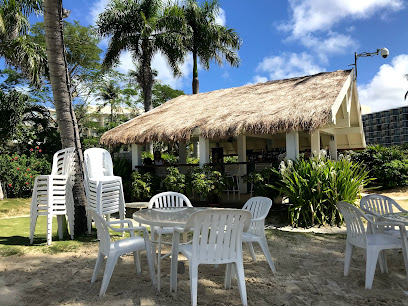
Safehouse Bar
Experience the vibrant nightlife at Safehouse Bar in Saipan, where great drinks and lively conversations await every visitor.

Tapped Out
Experience the vibrant dining scene at Tapped Out, a premier restaurant and brewpub in Saipan, offering delicious meals and craft beers.
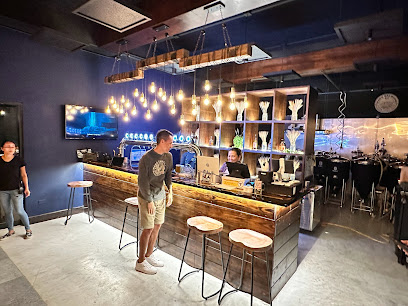
Joe's Bar and Steak House
Experience the vibrant nightlife of Saipan at Joe's Bar and Steak House, where delicious steaks and refreshing drinks await.

Boss Karaoke Bar
Experience the vibrant nightlife of Saipan at Boss Karaoke Bar, where every night is a celebration of music, fun, and unforgettable memories.

VFW Bar
Experience the vibrant nightlife of Saipan at VFW Bar, where locals and travelers come together for refreshing drinks and great entertainment.

Relox Bar
Discover the lively atmosphere of Relox Bar, Saipan's ultimate karaoke destination, where fun, music, and drinks await you!
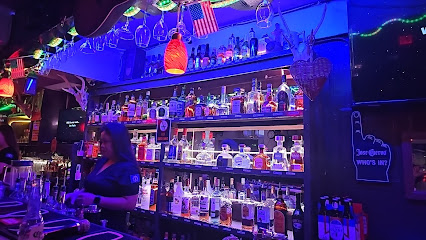
Last Shot Bar
Experience the vibrant nightlife and breathtaking views at Last Shot Bar, the ultimate beachside destination in Saipan's tropical paradise.

9/Eleven RestoBar
Discover the lively vibe of 9/Eleven RestoBar in Saipan, where delicious food meets refreshing drinks in a vibrant island atmosphere.
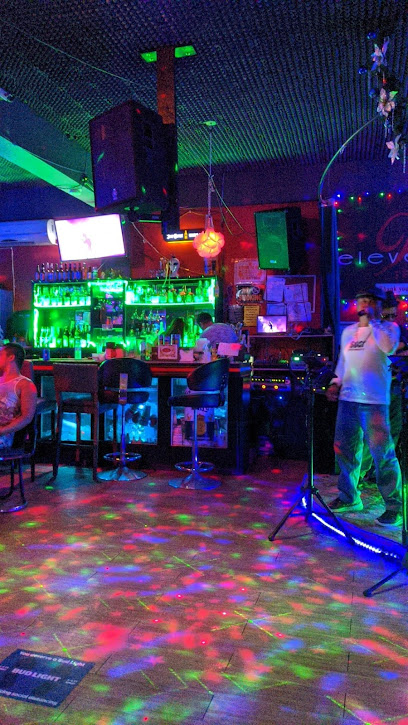
Cheers Karaoke Bar
Experience vibrant nightlife and unforgettable karaoke moments at Cheers Karaoke Bar in Garapan, Saipan - the ultimate destination for music lovers.

6JMS BAR & GRILL
Discover the vibrant culture of Saipan at 6JMS Bar & Grill, where local flavors meet a lively atmosphere for an unforgettable dining experience.
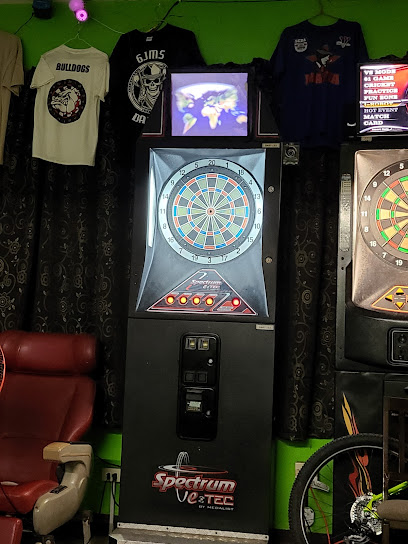
Local Phrases
-
- HelloHåfa Adai
[hah-fah ah-die] - GoodbyeAdios
[ah-dyose] - YesÅe
[ah-eh] - NoTi
[tee] - Please/You're welcomeUn tungo' yan si Yu'us Ma'åse
[oon toong-goh yan see yoo-oos mah-ah-seh] - Thank youSi Yu'us Ma'åse
[see yoo-oos mah-ah-seh] - Excuse me/SorryDispensa
[dee-spen-sah] - How are you?Cómo estás?
[koh-moh ehs-tahs] - Fine. And you?Biba. Yan ikao?
[bee-bah yan ee-kah-oh] - Do you speak English?U hungok inglis?
[oo hoon-gohk een-glees] - I don't understandTi huungok
[tee hoon-gohk]
- HelloHåfa Adai
-
- I'd like to see the menu, pleaseHa'ånen hao para i menyu, si yu'us ma'åse
[hah-ah-nen how pah-rah ee mehn-yoo see yoo-oos mah-ah-seh] - I don't eat meatTi mannginge gollai
[tee mah-ngeeng-eh gohl-lie] - Cheers!Biba!
[bee-bah] - I would like to pay, pleaseHa'ånen hao para i pago, si yu'us ma'åse
[hah-ah-nen how pah-rah ee pah-goh see yoo-oos mah-ah-seh]
- I'd like to see the menu, pleaseHa'ånen hao para i menyu, si yu'us ma'åse
-
- Help!Ayudame!
[ah-yoo-dah-meh] - Go away!Låo'!
[lah-oh] - Call the Police!Tångnga i polisia!
[tahng-ngah ee poh-lee-syah] - Call a doctor!Tångnga i manmagahet!
[tahng-ngah ee mahn-mah-gah-heht] - I'm lostKåt malaeku
[kaht mah-lah-eh-koo] - I'm illKåt maolek
[kaht mah-oh-lek]
- Help!Ayudame!
-
- I'd like to buy...Ha'ånen hao para bumira...
[hah-ah-nen how pah-rah boo-mee-rah] - I'm just lookingLamang hao ti huungok
[lah-mahng how tee hoon-gohk] - How much is it?Kåtbiha?
[kaht-bee-hah] - That's too expensiveMalingu hao
[mah-leen-goo how] - Can you lower the price?Måpos hao i prisu?
[mah-pohs how ee pree-soo]
- I'd like to buy...Ha'ånen hao para bumira...
-
- What time is it?Kåt biha i ora?
[kaht bee-hah ee oh-rah] - It's one o'clockMunga i chelu
[moong-gah ee cheh-loo] - Half past (10)Kåtbiha i dies
[kaht-bee-hah ee dees] - MorningKålok
[kaht-lohk] - AfternoonKåloklok
[kaht-lohk-lohk] - EveningKåtano
[kaht-ah-noh] - YesterdayNalå'an
[nah-lah-ahn] - TodayÑålang
[nyah-lahng] - TomorrowMångnga
[mah-ng-ngah] - 1Chelu
[cheh-loo] - 2Dos
[dohs] - 3Tris
[treess] - 4Kwåtro
[kwaht-roh] - 5Singko
[seeng-koh] - 6Sais
[sah-ees] - 7Siette
[see-eh-teh] - 8Otsu
[oh-tsoo] - 9Nwebe
[nweh-beh] - 10Dies
[dees]
- What time is it?Kåt biha i ora?
-
- Where's a/the...?Kåtbiha i...
[kaht-bee-hah ee] - What's the address?Kåtbiha i direksion?
[kaht-bee-hah ee dee-rek-see-ohn] - Can you show me (on the map)?Måpos hao påtguåm i...
[mah-pohs how paht-gwahm ee] - When's the next (bus)?Kåtbiha i siguiente...
[kaht-bee-hah ee see-gwee-ehn-teh] - A ticket (to ....)Un tiket (para i...)
[oon tee-keht pah-rah ee]
- Where's a/the...?Kåtbiha i...
History of Saipan
-
The indigenous Chamorro people were the first known inhabitants of Saipan, settling the island over 3,500 years ago. They developed a rich culture known for its unique latte stone structures, used as foundations for their homes. The Chamorros engaged in fishing, farming, and trade with nearby islands.
-
In 1521, Ferdinand Magellan's expedition made contact with the Chamorros, marking the beginning of European influence. By 1668, Spain formally claimed the Northern Mariana Islands, including Saipan, and established missions to convert the Chamorros to Christianity. This period saw significant cultural and demographic changes due to Spanish policies and diseases.
-
Following the Spanish-American War in 1898, Spain sold the Northern Mariana Islands to Germany in 1899. Germany's brief rule ended in 1914, when Japan seized the islands during World War I. Under Japanese administration, Saipan became a significant sugarcane production center, leading to an influx of Japanese, Korean, and Okinawan laborers.
-
One of the most pivotal events in Saipan's history was the Battle of Saipan during World War II. From June 15 to July 9, 1944, U.S. forces engaged in fierce combat with Japanese troops, leading to a decisive American victory. The battle resulted in significant casualties and left a lasting impact on the island's landscape and population.
-
After World War II, Saipan came under U.S. administration as part of the Trust Territory of the Pacific Islands. The island's economy and infrastructure were rebuilt with American assistance. In 1978, the Northern Mariana Islands became a U.S. Commonwealth, granting its residents U.S. citizenship and greater self-governance.
-
In recent decades, there has been a resurgence of interest in Chamorro culture and heritage. Efforts to preserve traditional practices, language, and arts have gained momentum. Today, Saipan is a vibrant mix of indigenous Chamorro, Carolinian, and immigrant cultures, making it a unique destination for travelers seeking both historical and contemporary experiences.
Saipan Essentials
-
Saipan is accessible primarily by air. The island is served by Saipan International Airport (SPN), which receives flights from major hubs such as Guam, Tokyo, and Seoul. From the U.S. mainland, you can connect through Guam or other Asian cities. Regular flights are operated by airlines like United Airlines and Asiana Airlines. Ferry services are not a common mode of transport to Saipan.
-
Once on the island, transportation options include rental cars, taxis, and public buses. Renting a car is highly recommended for flexibility and convenience, especially if you plan to explore multiple locations. Taxis are available but can be costly for long distances. The public bus system is limited but serves popular tourist areas and major hotels. Some hotels also offer shuttle services to key attractions.
-
The official currency of Saipan is the U.S. Dollar (USD). Credit cards are widely accepted in most hotels, restaurants, and larger stores. However, it is advisable to carry some cash, particularly when visiting smaller shops or local markets. ATMs are readily available in major areas, but it's always wise to withdraw sufficient cash before heading to more remote locations.
-
Saipan is generally a safe destination for tourists, but standard precautions should always be taken. Avoid walking alone late at night, especially in secluded areas. The village of Garapan, a popular tourist spot, has occasional reports of petty theft targeting tourists, so remain vigilant. Keep personal belongings secure and be cautious of your surroundings in crowded places.
-
In case of emergency, dial 911 for immediate assistance. Saipan has medical facilities including the Commonwealth Health Center in Garapan. It's recommended to have travel insurance that covers medical emergencies. For minor health issues, pharmacies are available throughout the island. Always carry a copy of your identification and emergency contact information.
-
Fashion: Do dress comfortably and modestly, considering the tropical climate. Avoid overly revealing clothing when visiting cultural sites. Religion: Do show respect at religious and cultural sites. Removing shoes before entering certain areas might be required. Public Transport: Do be polite and patient when using public transport. Don't eat or drink on public buses. Greetings: Do greet locals with a friendly 'Hello' or 'Hafa Adai,' which means hello in Chamorro. A handshake is also appropriate. Eating & Drinking: Do try local dishes and accept hospitality graciously. Don't waste food, as it is considered disrespectful.
-
To experience Saipan like a local, visit the weekly markets where you can buy fresh produce and local crafts. Engage with residents, who are generally welcoming and happy to share stories about the island's history and culture. Don’t miss exploring hidden beaches and lesser-known hiking trails for a unique and tranquil experience. Additionally, attending local festivals can provide deep insights into the island's cultural heritage.
Nearby Cities to Saipan
-
Things To Do in Kagman
-
Things To Do in Capital Hill
-
Things To Do in Garapan
-
Things To Do in San Roque
-
Things To Do in Koblerville
-
Things To Do in Yigo
-
Things To Do in Dededo
-
Things To Do in Tamuning
-
Things To Do in Tumon
-
Things To Do in Mangilao
-
Things To Do in Hagåtña
-
Things To Do in Sinajana
-
Things To Do in Agana Heights
-
Things To Do in Santa Rita
-
Things To Do in Agat















